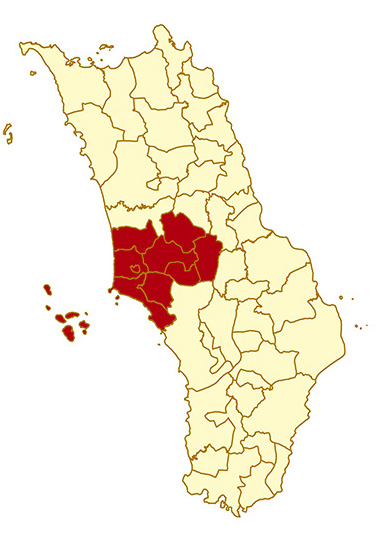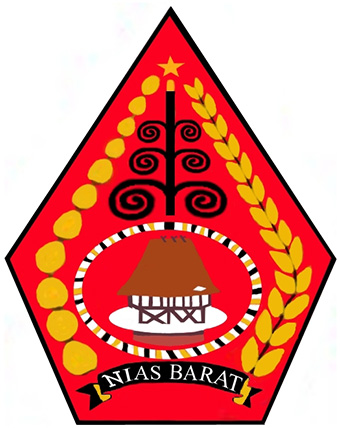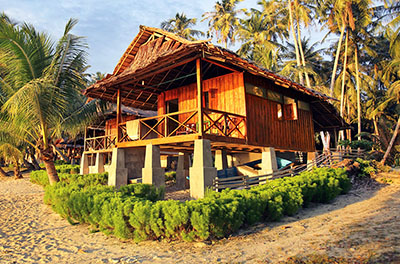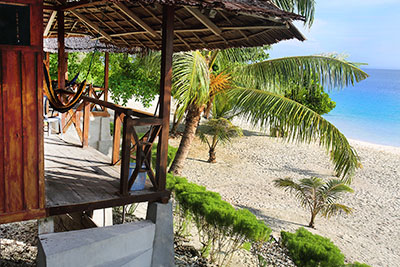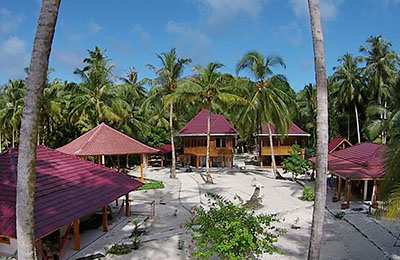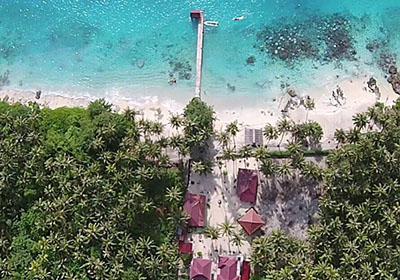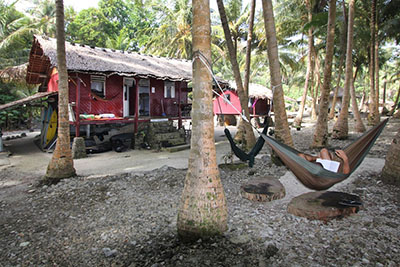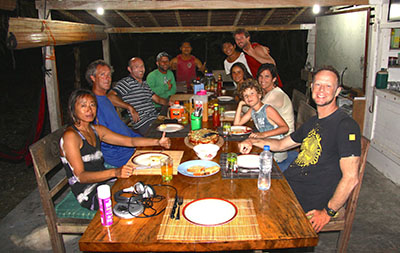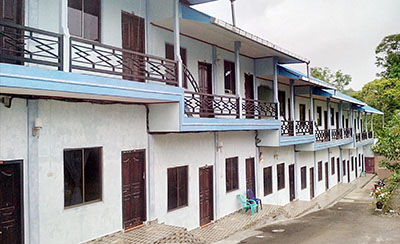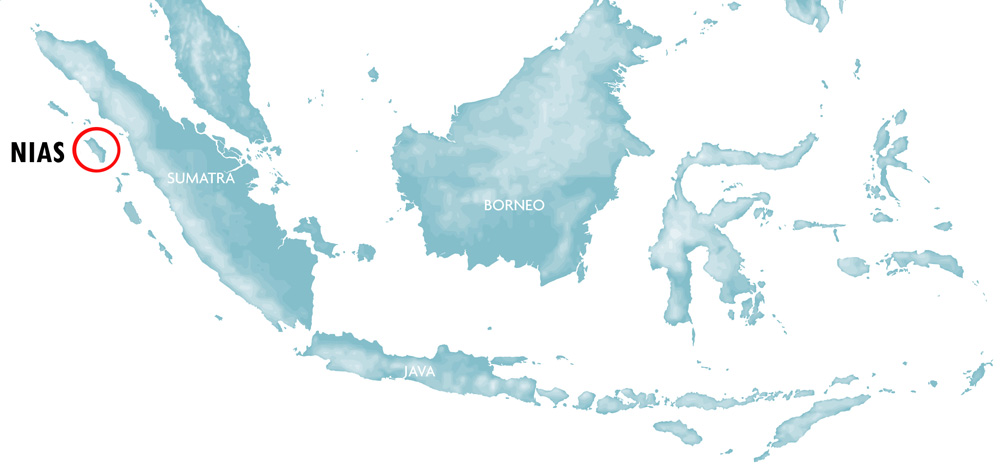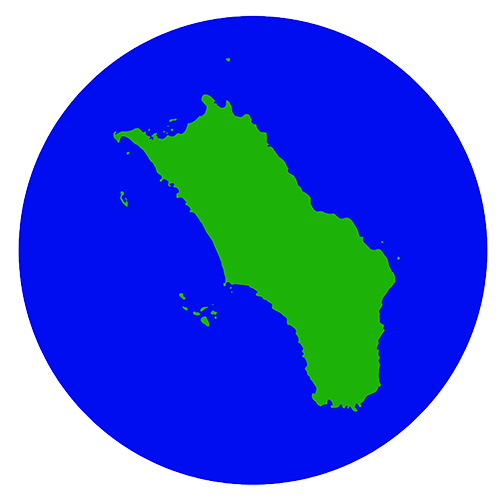West Nias Regency
West Nias Regency is one of the smaller districts on Nias and it is located on the central west-coast of the island. In the Nias language this region is known as Tanö Aekhula – the land where the sun sets. Most of West Nias consists of forest clad mountains and valleys but it also includes a beautiful coast line. More importantly for visitors, it includes the Hinakos, a group of eight islands off the western tip of Nias. Asu Island in the Hinakos is one of the highlights of Nias, and after Sorake and Telo Islands it is the most popular destinations for foreign visitors. Due to this West Nias receives a small but steady stream of tourists, but the vast majority of them just travel through the district on their way to Asu. Until recently this was quite understandable as the roads in this district were very bad and there was no place to stay. But in the last couple of years there has been huge improvement. There is now a hotel in the district center and roads have improved a lot. West Nias is still pretty rough and largely unexplored, but at least now there is somewhere to stay. In the next few years this remote part of Nias will no doubt be explored by adventurous travellers.

Surfing in Hinakos remains the main reason why people come to West Nias. Photo courtesy of Puri Asu Resort and Asu Surf Camp.
The Islands
Hinakos is a group of islands off the west-coast of Nias. Like many of the small islands around Nias they come pretty close to the post card depiction of paradise with white sandy beaches, swaying palm trees and crystal-clear turquoise water. As if this wasn’t enough there is world-class surfing, beautiful coral reefs and great deep sea fishing. For this reason Hinakos and in particular Asu Island is the main reason people come to West Nias.
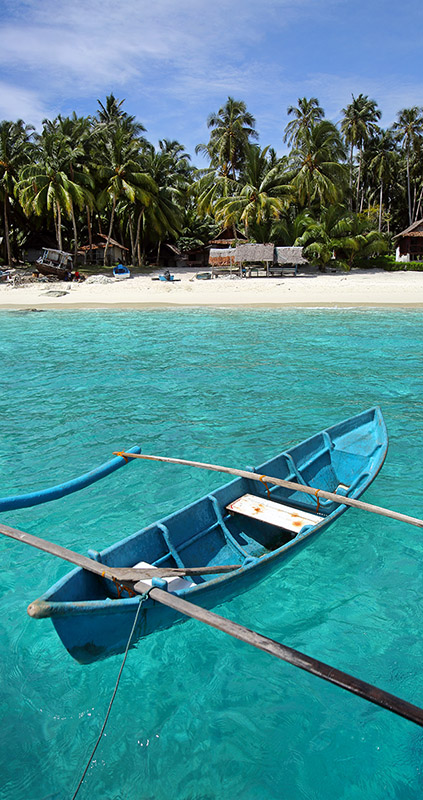
Asu Island beach.
Like many other tropical islands in Sumatra the Hinakos were ‘discovered’ by surfers. The first wave that became famous was Bawa on the south end of the island with the same name. Surfers were initially sleeping rough or in local people’s homes on Bawa and Hinako Island. Eventually the surfers moved to Asu Island, which also has a great wave. They found that this island had the most beautiful beach and that there were very few local people living there. At one point there were eight surf camps and small beach resorts on Asu Island. But the 2005 earthquake changed all that. The island of Nias tilted on its side and the Hinakos were all of a sudden three meters higher than before. Islands changed shape, beaches disappeared and waves changed character. For a few weeks after the earthquake it was believed that the Hinakos had disappeared into the sea. This was not the case but for a long time there was a rumour that Asu Island was ‘ruined’. Some resort owners just walked away and left their businesses to become overgrown by the jungle. Others couldn’t survive when the tourists stopped coming.
Today there are three places to stay on Asu, who not only survived the slump, but also thrived. Both the foreign-owned surf camps and the locally owned beach bungalows are among the most popular places on all of Nias. Today not only surfers come to Asu, even if they are still in a majority. Fishermen, free divers, beach lovers or just about anyone who like to chill out on a tropical island can enjoy themselves on Asu Island.
Look at the ‘things to do section’ for more information about surfing, freediving and fishing in the Hinakos. The accommodation providers are described here.
Closer to Sirombu are two more islands; Pulau Si’irte and Pulau Lawandra. These islands are rarely visited except by locals harvesting coconuts.

There are lots of things to do on Asu Island. Its also a pretty good place to do nothing at all. Photo courtesy of www.puriasuresort.com
The coast
The coast line of West Nias is 35 kilometers long and most of it consists of long beaches, broken up here and there by rocky little headlands and river mouths. So how come this beautiful coastline hasn’t been discovered by developers and hotel companies already? The main reason is that this coastline is facing the Indian Ocean and the waves here are often very powerful. While many beaches are beautiful, it is not safe to swim when the swell is hitting the shore. The calmest conditions are between November and March. The other reason few people come here is that some sections of the coastline are very remote and inaccessible. This is the case with the beaches north of Sirombu, which is almost impossible to reach unless walking on foot. The 30 kilometer long area between Sirombu and Salonako (in North Nias) is the gap in the planned Nias Island ring road. Wetlands and big rivers make it very hard to build roads here, and this area is one of the wildest on Nias.
Sirombu Beach is inside a bay between a prominent headland and Si’irte Island. This is also where the port is located. The beach is very popular with locals during weekends, and there are some food stalls that serve fresh seafood here.
Falaete Beach is 10 kilometers further south near Lahusa village. It’s a great place for photos, with waves breaking on the beach and the craggy rocks around it. Only swim here during very calm conditions!
Farai’i Beach at the southern point of the West Nias coast also offers nice photo opportunities. At the river that divides West and South Nias there is a beach and just off shore is a small rocky island. Even though there may be fewer waves behind the island, be careful of rip currents in this area.
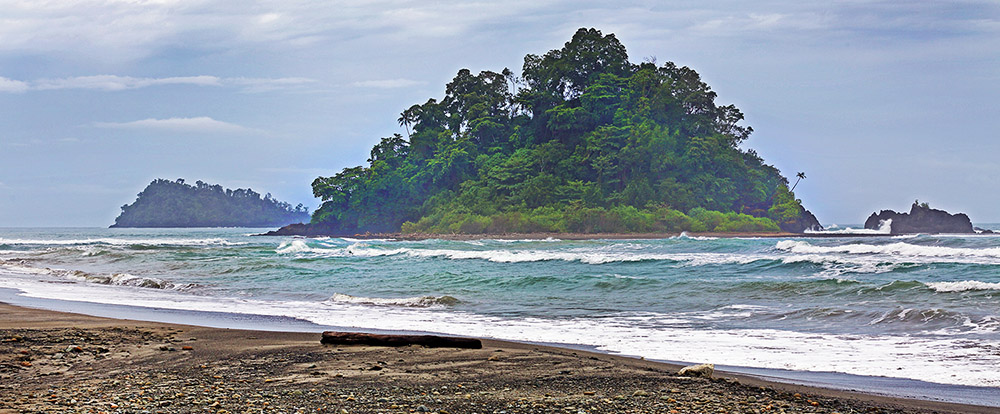
Fari’i Beach on southern the end of the West Nias coast.
The Interior
Most people only experience the interior of West Nias through the window of the car that takes them to Sirombu. But those who make the effort to explore this region will discover that West Nias is a ecotourism haven with a range of natural environments. Most of the interior consists of forest-clad hills crisscrossed by rivers and streams. Hidden in the forests and valleys are stunning waterfalls, caves, small lakes and natural springs. Even though parts of the interior are fairly inaccessible, many people live here making their lively hood from rubber tapping, copra and cocoa farming. Smaller pockets of primary forest remain in more remote areas. This is where the chance of encountering local wildlife is best. Monkeys, wild pigs and deer’s are regularly spotted in the forest. Rarer sightings include crocodiles which were once prolific in all the rivers on the island. As of now very few visitors venture into the green forests of the hilly interior. Potential activities include trekking, bird-watching, river trips, bike-tours, cave-exploration or just cooling off under the mist of a waterfall.
Cultural Heritage
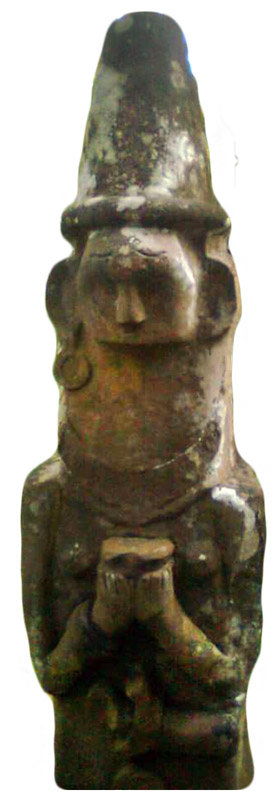 Culturally West Nias is an interesting region because it sits across the fault line of the northern and southern style of traditional houses and megaliths. In some areas the houses are distinctly northern while in other area a type of ‘fusion’ style has emerged. The fusion style is not as rigid and many houses here have borrowed designs from both northern and southern styles. Just like in Gunungsitoli and North Nias the cultural heritage sites here are quite spread out. Below are some interesting clusters of traditional houses and megaliths in West Nias Regency that are accessible to visitors:
Culturally West Nias is an interesting region because it sits across the fault line of the northern and southern style of traditional houses and megaliths. In some areas the houses are distinctly northern while in other area a type of ‘fusion’ style has emerged. The fusion style is not as rigid and many houses here have borrowed designs from both northern and southern styles. Just like in Gunungsitoli and North Nias the cultural heritage sites here are quite spread out. Below are some interesting clusters of traditional houses and megaliths in West Nias Regency that are accessible to visitors:
- Simae’asi traditional village in Mandrehe sub-district
- Iraono Gaila traditional village in Lahömi sub-district.
- Hiligoe is a cluster of anthropomorphic megaliths in Sisarahili village. Mandrehe sub-district.
- Lolozirugi village have a cluster of megaliths. Mandrehe sub-district.
- Gowe Mbaluga Darua is an anthropomorphic megalith in Lauru village near Onolimbu. Lahömi sub-district.
Getting around in West Nias
The most important road in West Nias is the link between Gunungsitoli town and Sirombu harbour. This is a vital link between the east and west coast of Nias, because the ring road around the Island is not completed. Anyone going to Asu will travel this route. Even though the distance is only 50 kilometers the trip often takes three hours due to the slow going on narrow and windy roads across the mountainous interior. Halfway across the island there is a turnoff to the south. By following this road you eventually reach the South. Few foreigners travel this way, because the east coast road to the south is much faster. But adventurous travellers sometimes choose this option in order to make a ‘loop’ of the southern part of the Island. There is also a coastal road from Sirombu to the south. It’s fairly rough but passes some beautiful coastline and countryside along the way. The trip from Sirombu to Sorake takes about three hours. The best way to travel around West Nias is by motorbike or four-wheel drive. For advice on taxis, hire cars and boats look here.


